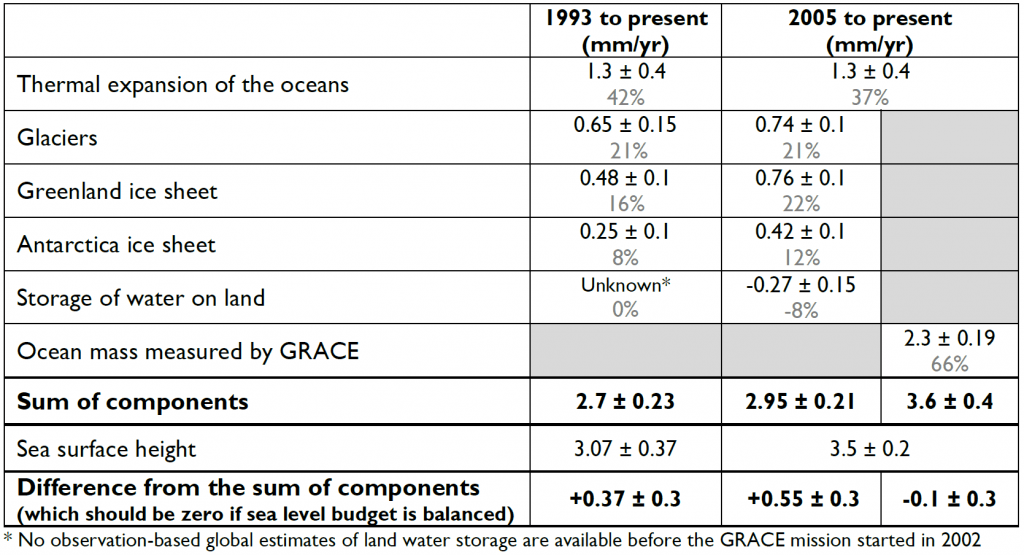Plain language summary
The World Climate Research Programme (WCRP) ‘Grand Challenges’ represent areas of emphasis in scientific research, modelling, analysis and observations for WCRP and its affiliate projects in the coming decade. One of its Grand Challenges, “Regional Sea Level and Coastal Impacts”, initiated an international effort involving the sea-level community worldwide with the objective of providing a comprehensive estimate of the global sea level budget. The global sea level budget provides a ‘balance-sheet’ approach for identifying and correctly accounting for all the factors that contribute to sea level rise.
About 90 participants from 50 different research institutions were involved in either the provision of space-based and/or in situ observations, model estimates and algorithms, or in the careful evaluation of their quality, uncertainties and discrepancies. The paper presents a synthesis of the first assessment performed during 2017– 2018.
The results are presented in terms of the average trend in sea level in mm per year for both the sea surface (as measured by satellite-based altimetry) and for each of the main contributory factors (namely ocean thermal expansion, glaciers, Greenland, Antarctica and storage of water on land). Results are presented for two time periods:
• 1993 to present when satellite observations have provided an unprecedented increase in Earth observations; and
• 2005 to present when additional data on changes in freshwater, ice and ocean mass are available from the Gravity Recovery and Climate Experiment (GRACE).

Table 1. Summary of results
1993 to present
The results show that the global mean sea level budget for 1993 to present can be balanced to within 0.4 mm per year. In other words, the sum of all the main contributory factors is 0.37 mm per year different from the observed change in sea surface height over the same period. Sea surface height (as measured by satellite-based altimetry) showed an average increase of 3.1 mm per year over this period. Ocean thermal expansion, glaciers, Greenland and Antarctica were found to contribute 42%, 21%, 15% and 8%, respectively. A lack of observation-based estimates of the contribution of water storage on land means that this could not be included in the sum.
2005 to present
The increased data availability, paradoxically, makes balancing the sea level budget more complicated. One the one hand, it is estimated from GRACE data that increased water storage on land has slightly reduced sea level rise (by 0.27 mm per year), leading to a larger discrepancy with the sum of all the main components (0.55 mm per year) that cannot easily be explained. Ocean thermal expansion, glaciers, Greenland and Antarctica were found to contribute 37%, 21%, 22% and 12%, respectively. On the other hand, GRACE can also be used to directly estimate the change in ocean mass over the same period (which should be equivalent to the sum of all the main components including water storage on land). Using this approach balances the global sea level budget to within 0.1 mm per year.
For both time periods it is apparent that substantial uncertainty remains. This is particularly true regarding the role of water storage on land, and the fundamental question of whether it provides a positive or negative contribution to sea level rise. The role of the deep ocean is also poorly understood. The Argo floats that provide observations of thermal expansion only measure down to around 2,000 meters below the ocean surface, so it is not known to what extent warming (and thus thermal expansion) is impacting the deepest ocean waters.
Further global sea level budget assessments are being planned, including possible annual updates.
Download pdf version.
Full paper: WCRP Global Sea Level Budget Group (2018), Global sea-level budget 1993–present. Earth System Science Data, 10, 1551-1590. (DOI: 10.5194/essd-10-1551-2018 ![]() ).
).
WP4 output
